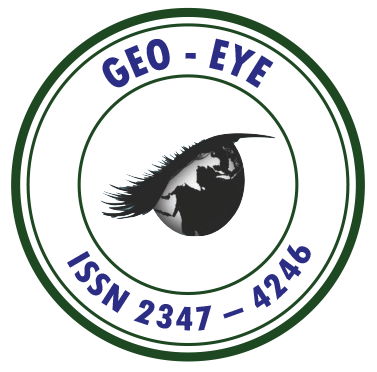
Geo-Eye
Department of Geography & GIS

Department of Geography & GIS

Geo-Eye
Year: 2021, Volume: 10, Issue: 2, Pages: 35-42
Original Article
Shahid Saleem1∗, Firoz Ahmed Hajam1, Javeed Ahmed Rather2
1 Research Scholar, Department of Geography & Disaster Management, University of Kashmir 2 Senior Assistant Professor, Department of Geography & Disaster Management, University of Kashmir
*Corresponding author email: [email protected]
Received Date:09 August 2021, Accepted Date:12 November 2021
Analysis of land use and land cover dynamics in the Sind watershed of Kashmir provides valuable insights into the changes that have occurred in the region over the past three decades. The use of satellite images from Landsat 5 TM in 1995, 2005, and Landsat 8 TM in 2015 and 2019 with a spatial resolution of 30m allows for a comprehensive and detailed analysis of the changes in the study area. The images were processed using ArcGIS 10.2.2 and ERDAS Imagine 14, and land use classes identified. The results of the study showed that there has been a significant increase in farmland and settlement areas in the past 25 years. This increase can be attributed to the growing population and the increasing demand for agricultural production and urbanization. These changes have important implications for the ecosystem and the environment, as well as for the livelihoods of the local people. The conversion of natural lands, such as forests and grasslands, into agricultural or urban areas can lead to habitat loss and degradation, soil erosion, and increased runoff and pollution. The retrospective analysis of land use and land cover dynamics in the Sind watershed of Kashmir provides important information for decision-makers and highlights the need for sustainable land use practices to ensure the protection of the ecosystem and the livelihoods of the local people. The findings of this study can inform policies aimed at promoting sustainable land use and environmental management in the region.
Keywords: Spatio-temporal analysis, Sind catchment, Kashmir valley, Land use land cover, Watershed
© 2021 Saleem et al. This is an open-access article distributed under the terms of the Creative Commons Attribution License, which permits unrestricted use, distribution, and reproduction in any medium, provided the original author and source are credited.
Published By Bangalore University, Bengaluru, Karnataka
Subscribe now for latest articles and news.